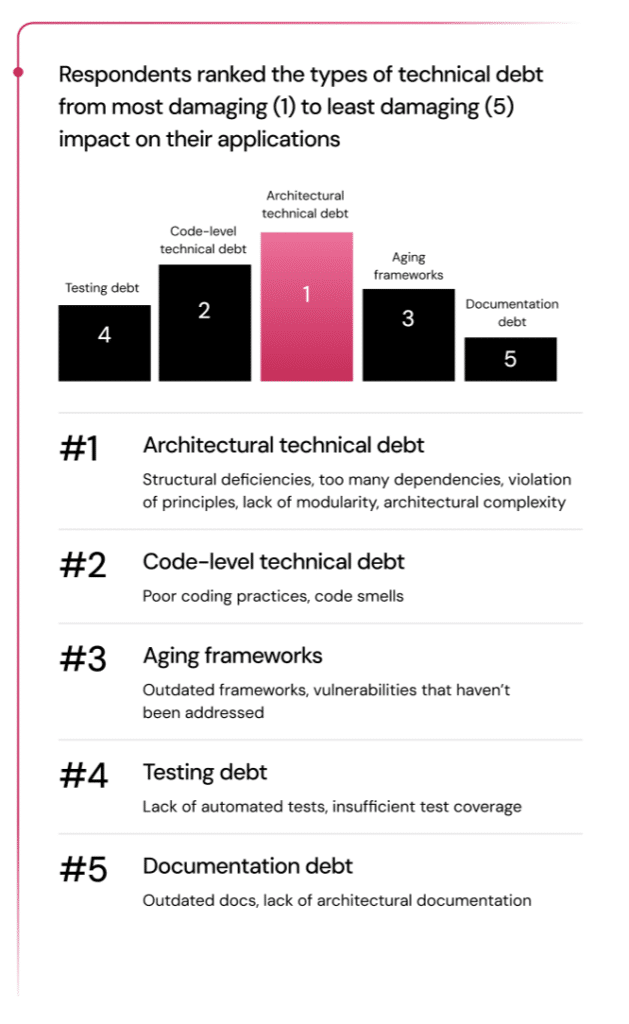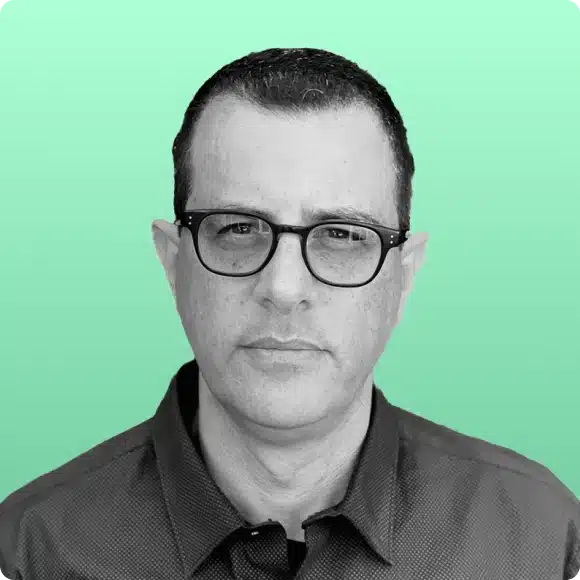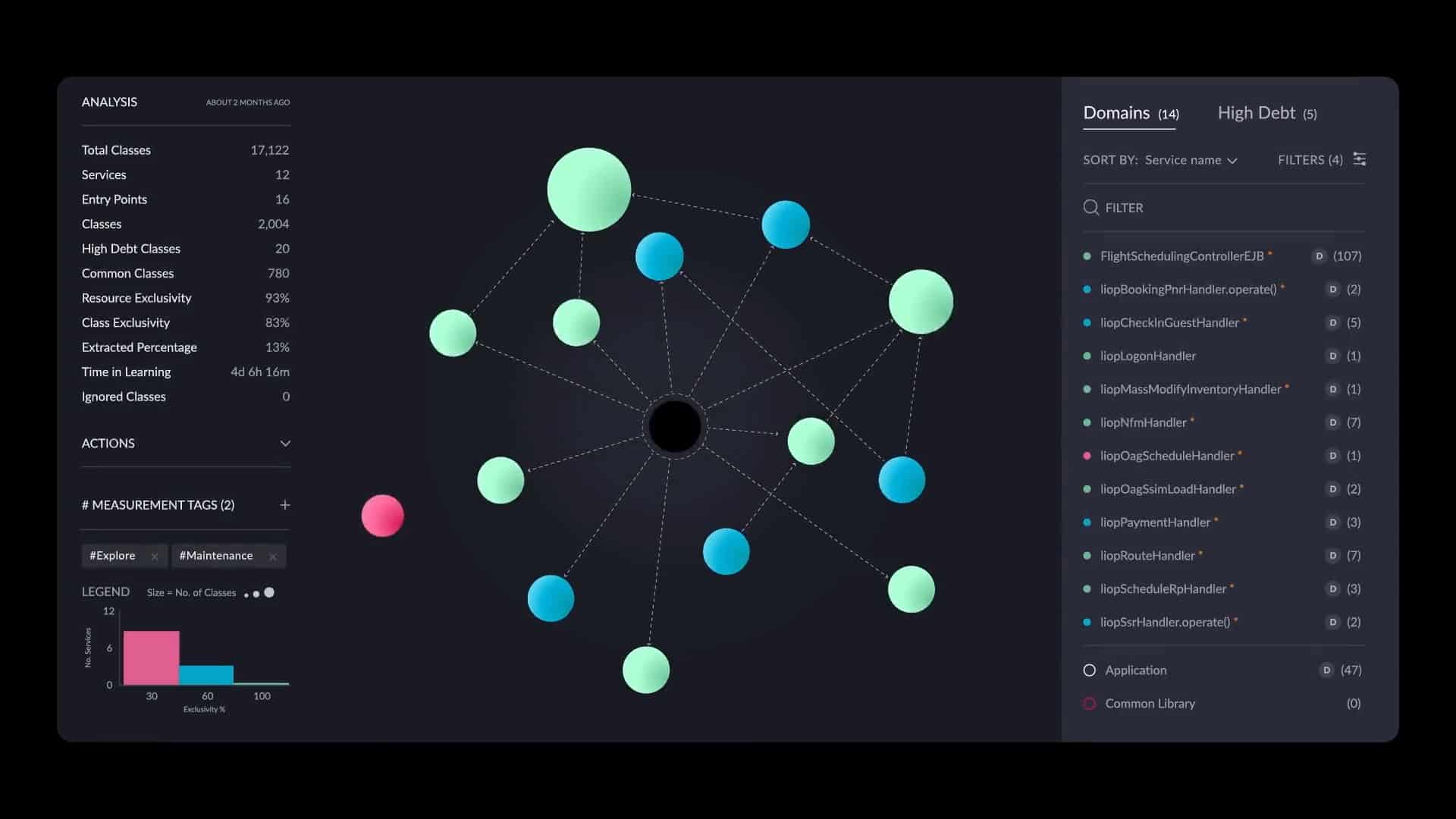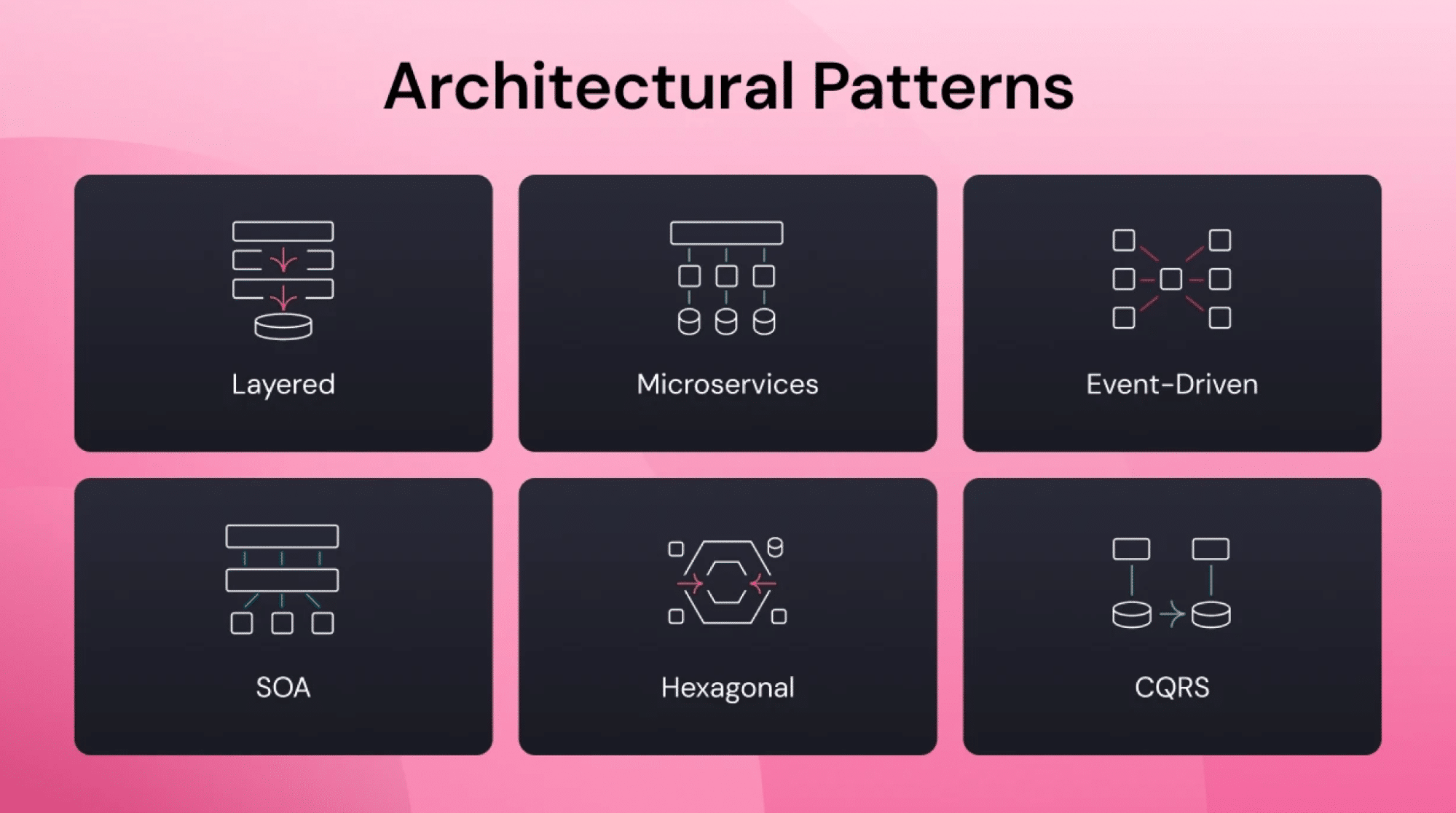Our vision for the future of software development, from eliminating architectural tech debt to building incredibly resilient and scalable applications at high velocity.
Today marks an exciting milestone for vFunction as we unveil our vision for AI-driven architectural observability alongside new capabilities designed to address a $1.52 trillion technical debt problem.
In the past year, an unprecedented AI boom coupled with a tense economic climate sparked increased pressure on enterprises and startups alike to stand out from the competition. Software teams must incorporate innovative new technology into their products, stay ahead of customer needs, and get exciting new features to market first — all without stretching engineering resources thin.
But there’s one big roadblock to this ideal state of high-velocity, efficient, and scalable software development: architectural technical debt (ATD). At vFunction, we’ve developed a pioneering approach to understanding application architecture and remediating technical debt that relates to its architecture.
Combatting the challenges of modern software architecture
Modern software needs to function seamlessly in an ecosystem of on-premises monoliths and thousands of evolving cloud-based microservices and data sources. Each architectural choice can add complexity and interdependencies, resulting in technical debt that festers quietly or wreaks havoc suddenly on the entire application’s performance.
“Addressing architectural debt isn’t just a technical cleanup, it’s a strategic imperative. Modern businesses must untangle the complex legacy webs they operate within to not only survive but thrive in a digital-first future.
Every delay in rectifying architectural debt compounds the risk of becoming irrelevant in an increasingly fast-paced market.”
Hansa Iyengar, Senior Principal Analyst
Omdia
While knowing is part of the battle, it’s much harder to identify the root cause of issues due to technical debt and prioritize fixing them to maximize profit, performance, and retention metrics.
vFunction brings to market an efficient, reliable system for addressing challenges caused by architectural technical debt. First, it provides real-time, visual maps across the spectrum of application architectures, from monoliths to microservices. It then generates prioritized suggestions and guidance for removing complexity and technical debt in every release cycle.
Winning back billions of dollars in unrealized revenue and profits by shifting left for resiliency
Our survey found that ATD is the most damaging type of technical debt. It doesn’t just slow down engineering velocity, but also stifles growth and profitability, since the delays and disruption it causes eat directly into potential revenue from new products and features. Additionally, tackling technical debt once it’s an emergency costs far more in engineering hours and outsourced support than a proactive, measured remediation plan.

The effects of ATD can add up to billions in lost revenue and profits in several ways:
- Missed market opportunities and halted revenue streams due to slow product or feature delivery and reliability issues
- Missed revenue opportunities from delayed product launches or feature releases due to concerns about system capacity
- Customer churn and loss of market share due to competitors with more reliable applications and faster feature delivery
- Increased infrastructure and operational costs to compensate for scalability issues and performance concerns
- Reduced resiliency that increases downtime and outages leading to lost revenue
Architectural observability gives organizations the power to prevent losses from ATD by automatically analyzing applications’ architecture after each release and giving software teams actionable remediation tasks based on what’s most important to them (whether engineering velocity, scalability, resiliency, or cloud readiness). The vast majority of organizations are using observability tools and many are adopting OpenTelemetry to identify performance issues and alert on potential outages. These are very important from a tactical perspective, but these same organizations barely get to deal with the strategic issue of how to reduce the amount of performance or outage incidents. Knowing is important, but knowing does not mean solving.
By pioneering architectural observability, vFunction allows organizations to ‘shift left’ by providing architectural insights that help create more resilient and less complex apps thereby reducing outages and increasing scalability and engineering velocity.
The vFunction architectural observability platform aligns architectural choices to tangible goals for growth and resilience.
vFunction’s AI-driven architectural observability platform
We built vFunction to transform how organizations think about architecture, arming software teams with a full understanding of their applications’ architectural modularity and complexity, the relationships and dependencies between domains, and ongoing visibility into architectural drift from their desired baseline. vFunction increases the scalability and resiliency of monolithic and distributed applications — the former uses the platform to add modularity and reduce interdependencies, while the latter gains clarity on component dependencies while minimizing complexity.
“According to our research, we see only 18% of organizations leveraging architectures in production applications. vFunction’s vision for AI-driven architectural observability represents a shift in the way enterprises can perceive and leverage their software architectures as a critical driver of business success.”
Paul Nashawaty, Practice Lead and Lead Principal Analyst
The Futurum Group
vFunction’s patented models and AI capabilities set the stage for a new approach to refactoring and rearchitecting throughout the software development life cycle. We’ve recently announced vFunction Assistant, a tool that gives development teams and architects real-time guidance on streamlining the rearchitecting and refactoring processes based on their unique goals.
Looking ahead: a future of velocity, scalability, and resiliency
As AI-driven architectural observability becomes a natural part of every engineering team’s development cycles, engineering leaders will be able to do far more than just identify architectural technical debt. They’ll make a practice of continuously modernizing their applications, delivering powerful customer experiences and standing out from the competition.
vFunction is making this vision a reality with an AI-driven platform that allows companies to automatically identify technical debt, quickly remediate it as part of efficient, well-prioritized sprints, and continuously modularize and simplify application architectures. Our mission is clear: empower engineering teams to innovate faster, address resiliency earlier, build smarter, and create scalable applications that change the trajectory of their business. To learn more about what this could mean for your organization, request a personalized demo here or dive into the resources listed below.
- Research report: Microservices, Monoliths, and the Battle Against $1.52 Trillion in Technical Debt
- Video: What is architectural observability?
- Analyst report: How to Manage Architecture Technical Debt in 2024








